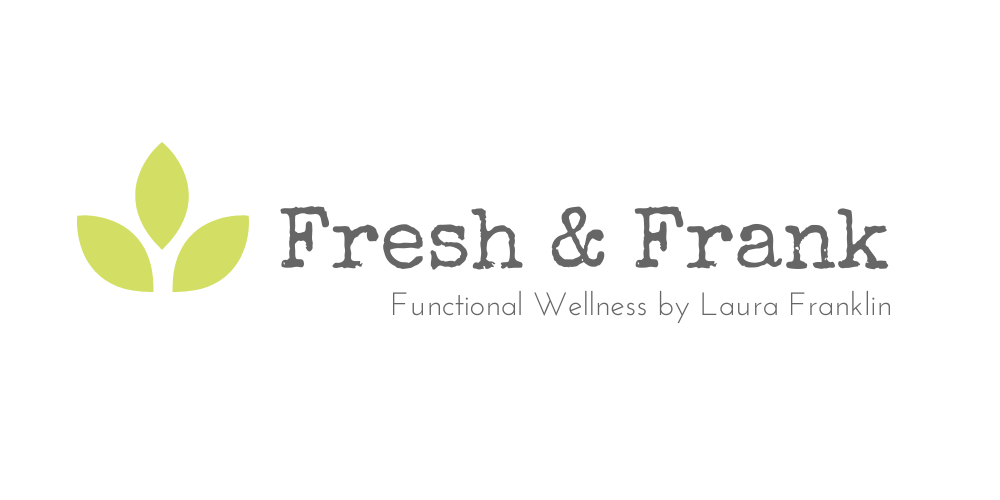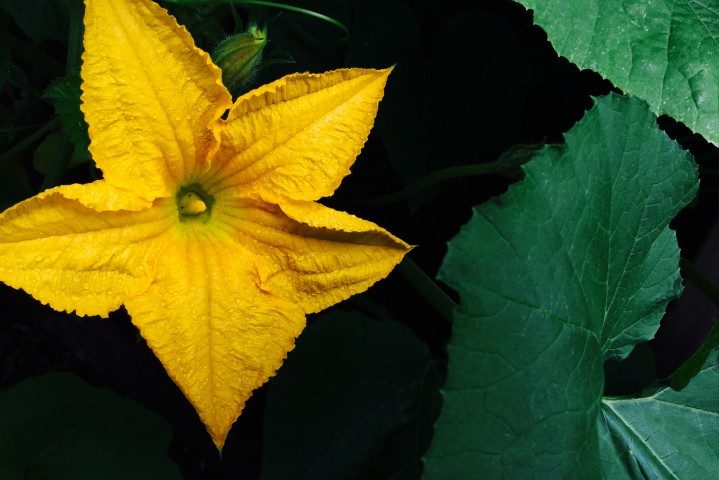Eat… flowers… what?!
Yes! There are many edible flowers that make delicious, flavourful, nutritious and PRETTY additions to your meals. Plus, they’re wildly easy to grow, AND attract pollinators (bees, butterflies, hummingbirds…), which we NEED in order to grow vegetables like tomatoes, zucchini, squash etc.
There are so many to choose from, but I’ve come up with my personal top 6, which are all quite easy to grow organically from seed.
A Quick Safety Note, Justtttt In Case:
Before you consume just any flower, take heed of these guidelines:
- Eat flowers only when you are positive that they are edible. Some flowers look VERY similar. Be sure to have a positive ID first. If you grew them yourself, this is basically fool-proof.
- Only eat flowers that were grown organically. Many plants you purchase from retailers have been sprayed with pesticides. Especially the ones that look REALLY nice. Do not eat roadside flowers or those picked in public parks. Both may have been treated with pesticide or herbicide, and roadside flowers may be polluted by car exhaust.
- For most flowers, only consume the petals (exceptions do apply).
If in doubt that the flower is edible, play it safe and skip it.
Eat flowers you know to be consumable — if you are uncertain, consult a reference book on edible flowers and plants.
Eat flowers you have grown yourself, or know to be safe for consumption. Flowers from the florist or nursery have probably been treated with pesticides or other chemicals. - If you suffer from allergies, introduce edible flowers gradually, as they may exacerbate allergies.
- To keep flowers fresh, place them on moist paper towels and refrigerate in an airtight container. Some will last up to 10 days this way. Ice water can revitalize limp flowers.
6 Edible Flowers You NEED in Your Garden:
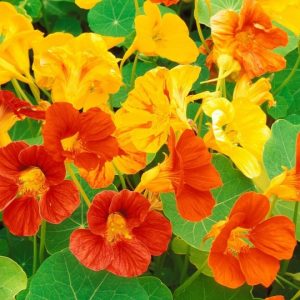
Nasturtiums
1. Nasturtiums
Annual. This is a popular edible flower that takes well to containers. Nasturtiums are available in trailing or upright varieties and their colour range is primarily reminiscent of a brilliant sunset. The cool thing about nasturtiums is that all parts of a nasturtium are edible: petals, leaves, and seeds. They have a peppery, spicy flavor; a cross between watercress and a radish. When the flowers go to seed, the seed pod is a marvel of sweet and spicy. You can stuff flowers, add leaves to salads, pickle buds like capers, and garnish to your heart’s content.
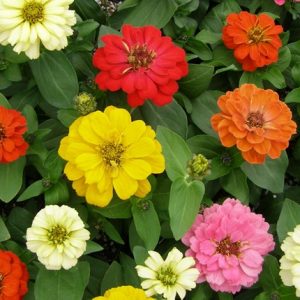
Zinnias
2. Zinnias
Annual. Not much flavour here, but zinnias are a “cut and come again” flower, meaning that the more you harvest them, the more they grow back and produce more flowers, so experiment! Use the petals (remove the seeds) for a beautiful, colourful addition to salads, summer drinks or desserts.
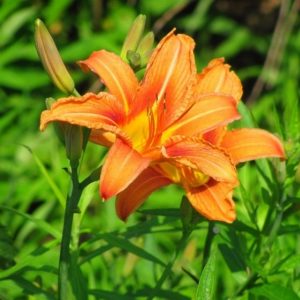
Daylilies
3. Daylilies
Perennial. This tough ornamental is a favorite in landscapes because it is a prolific and ornamental bloomer. Daylilies come in numerous shades of yellow, red, orange, purple and white. They have a mild vegetable flavor similar to asparagus. Remove the bitter white base of the bloom before you eat them. Also please be sure that you are tasting a daylily (hemerocallis), as other lilies can be toxic and can make you quite sick.
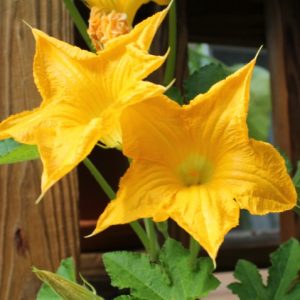
Squash Blossoms
4. Squash Blossoms
Annual. The blooms of all types of squash are edible, but the most popular ones come from the male flower of the zucchini and crookneck squash. The blooms have a mild squash taste and can be eaten raw in a salad or stuffed with ricotta and baked.
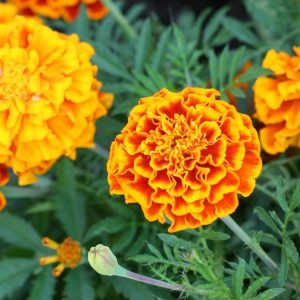
Marigolds
5. Marigolds
Perennial. Marigolds are eaten as petals or leaves, raw or blanched, fresh or dry, sweet or savory. Flavours range from spicy to bitter, tangy to peppery. Their sharp taste resembles saffron (also known as “Poor Mans Saffron”) To prepare marigolds: Pull entire petals from the stem, and as you hold them firmly in your hand, with scissors cut off the white (or pale greenish) “heels,” as this could give a bitter taste if not removed.
So go crrrray cray, have some fun, and add some flowers to your garden and your diet this summer! Be well.
New to the garden world? Check out my beginner’s guide to growing your own food!
Laura Franklin, CNP, FMCHC
She is here to preach what she practices and help you to prepare amazing whole food meals from scratch, grow your own organic food and optimize your lifestyle and environment to promote the most vibrant, glowing and energetic you.
Laura is currently based in Dundas, Ontario, Canada but works remotely with people from all over the world!
Latest posts by Laura Franklin, CNP, FMCHC (see all)
- Let’s Get Real: My Personal Health Journey (Part 3) - July 11, 2020
- IG: It’s happening… one of my fave vegetables is coming to life in the garden🤩🥦. Grew these baddies from tiny seeds started back in March.Have you seen brassica seeds? They’re like, sesame seed size but round. Tiny AF.Crazy that those wee balls of life can turn into something like this. Actually amazes me every time and never gets old. May be one of the reasons I love gardening so much.Anyway, these guys get bigger each day and I’m so stoked to eat them.Side note: please pray that the deer don’t get them before I do 😭I had an invader Wednesday night that ate all my green tomatoes, carrot tops, Swiss chard, a large head of romaine lettuce and my bean plants 😱. Stay safe little broccolis, you’re awesome - June 26, 2020
- IG: So I post a lot about gardening… I know. Butgrowing my own food is just one element of my decision to pursue lifelong health personally AND as a career.When my hands aren’t in the soil cultivating plant life, I’m on ZOOM calls with clients as a Holistic Nutritionist and Functional Medicine Certified Health Coach cultivating optimal health.I coach and guide my clients one-on-one towards renewed health and high performance using the fundamentals of Functional Medicine… a modality that is near and dear to my heart.I decided to specialize in Functional Medicine because a few years ago, I was a patient of Functional medicine myself. When I found myself in the throws of mystery chronic illness that could not be diagnosed or resolved via conventional medicine or other nutritional and natural therapies, I just knew there was something that was being missed.Upon pursuing Functional Medicine, which looks for the deepest root cause of what’s going on in the body individually, we immediately found the causes of my health challenges and were able to efficiently and appropriately steer me towards a path of renewed optimal health. Within 8 months, my life had completely changed and I was operating at a completely different level of vitality. Functional Medicine changed my life with the gift of renewed health from which I operate as a wellness leader today.So. If you, or someone you love could use help finding some answers to your chronic health issues, or just want to operate at an even higher level of performance and/or vitality, I encourage you to look into Functional Medicine.If you want to chat more about what I do and how my colleague @drnavazhabib and I can support you at our practice @healthupgraded, DM me.If this information helps just one person find answers and better health as it did for me years ago, I will be thrilled - June 22, 2020
